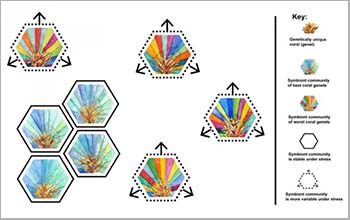
Acting Secretary of the Air Force John Roth told a congressional subcommittee Friday that both the Air and Space forces are moving decisively to confront new and emerging threats, including those from China and Russia, while also devoting resources “to rid our ranks of corrosive elements and injustices.”
Appearing alongside Air Force Chief of Staff, Gen. Charles Q. Brown, Jr., and Chief of Space Operations, Gen. John Raymond, Roth told the House Appropriations Subcommittee on Defense that the Air and Space Forces continue to recalibrate their practices, personnel and policies to address “peer adversaries” after years focusing primarily on terrorism.
“Long-term strategic competition with China and Russia demands that we focus on the capabilities we need today to win tomorrow,” Roth told the subcommittee in his opening statement. “Our Nation’s competitive strategic advantage relies on air and space superiority, which is underpinned by rapid technological advancement and the extension of space as a warfighting domain.”
Testifying before the Defense Appropriations Subcommittee is the first and one of the most important steps in determining how much funding the Air and Space Forces will receive in the next fiscal year, which begins Oct. 1. But because Congress has not yet received detailed spending proposals from any federal agency, the questions during Friday’s two-hour session were more general than in a typical year.
They spanned topics ranging from how the Air Force is responding to its pilot shortage, to questions about readiness and detecting “space junk,” to an assessment of China’s influence in Latin America and the Department’s view on modernizing the aging Minuteman III ground-based nuclear missile system.
When asked, “In the event you got more money, where would the focus be, what would be the top priority?” Roth acknowledged there would be difficult trade-offs.
“We’re going to have to make some hard choices and some difficult decisions concerning trying to invest in the future versus continuing to support some of our legacy systems,” he said. “My sense is the budget you’ll see is a balanced budget that can support the national security strategy with some reasonable risk.”
At the same time, he emphasized, “We need to continue investing in technology for the future.”
When asked about nuclear modernization, Brown said the case is strong for moving ahead with a new system known as the Ground Based Strategic Deterrent.
“What you will get is something that is more safe, more secure, and more reliable and also outpaces the threat we’re up against,” Brown said. “So it’s important that we do modernize that part of our nuclear portfolio,” he continued, noting that the current frontline system, the Minuteman III, is more than 40 years old.
With the Space Force entering its second year in existence, Raymond received a number of questions about fiscal discipline, acquisition programs and this: “Why do we need a Space Force? Why is not the regular Air Force program just as effective if not more so?”
Raymond expanded on his opening statement in which he said the United States remained preeminent in space, but there are now more nations operating with more sophistication and with differing motivations than ever before.
“The capability gap is shrinking between us and our closest competitors,” Raymond said in response to the question. “They are catching up.”
The nation’s leaders decided, he said, “To stand up a service that was purpose built for this domain. We’ve already seen the benefits of that elevation. We’re attracting greater talent. We’ve got a strong voice on requirements. We have a strong voice with our allies and partners. … So across the board we have seen a critical elevation of capability since we’ve established the Space Force.”
Answers by Roth, Brown and Raymond throughout the hearing reflected the Department’s overarching priorities. The practices and priorities, they said, include a mixture of imperatives such as modernizing the nation’s air and land-based nuclear deterrent, ensuring continued “air superiority,” nurturing strong and capable leaders, and continuing to lock arms with allies and partners.
It means continuing to rollout F-35 aircraft into the fleet. The F-35, according to Air Force senior leaders, “is the cornerstone of our future fighter force and air superiority.” It means continuing to introduce the KC-46 tanker into the fleet, while also continuing to revamp the service’s “career field” categories to match personnel and leadership philosophies to the needs of national security and modern warfare.
They also said it requires a new focus, fresh thinking and speed.
“The strategic environment has rapidly evolved and we haven’t changed fast enough to keep pace,” Brown told the subcommittee, noting that prior to becoming Chief of Staff he was the Air Force’s senior military official in the Indo-Pacific.
Brown added, “If we continue on a path of incremental change, our advantage erodes and losing becomes a distinct possibility.” That possibility he said, is why he released a document entitled, “Accelerate Change or Lose” soon after becoming Chief of Staff.
Along with emphasizing speed, the three leaders said another major priority is ensuring that the U.S. Space Force continues to build on its achievements. The nation’s newest military service came into being on Dec. 20, 2019, and in its second year is focused on integrating with partners at every level.
“Now that we have built this service, we are moving at speed to capitalize on its creation,” Raymond told the subcommittee in describing the Space Force’s near term priorities.
“We have set conditions to outpace emerging and dynamic threats and create new military options, working with the joint force, interagency, industry, and our partners and allies. These partnerships will allow us to move at speed without breaking our national treasury,” he said.
Like Roth and Brown, who specified emerging threats in blunt terms, Raymond detailed the way space is evolving into a more complex and challenging environment.
“These threats include robust jamming of GPS and communications satellites; directed energy systems that can blind, disrupt or damage our satellites; anti-satellite weapons in space or from the ground that
are designed to destroy US satellites; and cyber capabilities that can deny our access to the domain,” Raymond said.
Like Raymond, Brown and Roth also offered clear rationales for why the Air Force’s capabilities and readiness are crucial to the larger national security effort.
“Our Air Force is the only Service that provides our joint partners and allies the assurance of Air Superiority, the advantage of Global Strike, and the agility of Rapid Global Mobility through a range of capabilities most requested by today’s combatant commanders.”
Although confronted with an array of threats present in the air and space domains, Roth reaffirmed the Department’s commitment to its mission. “Our Airmen and Guardians stand ready, willing, and able to meet responsibilities to our Nation,” he said. “From 300 feet to 300 miles off the ground, we protect the homeland, we project power, and we defend democracy.”
Source: US Space Force
This webpage is made available by SEO Press Release, press release distribution service







